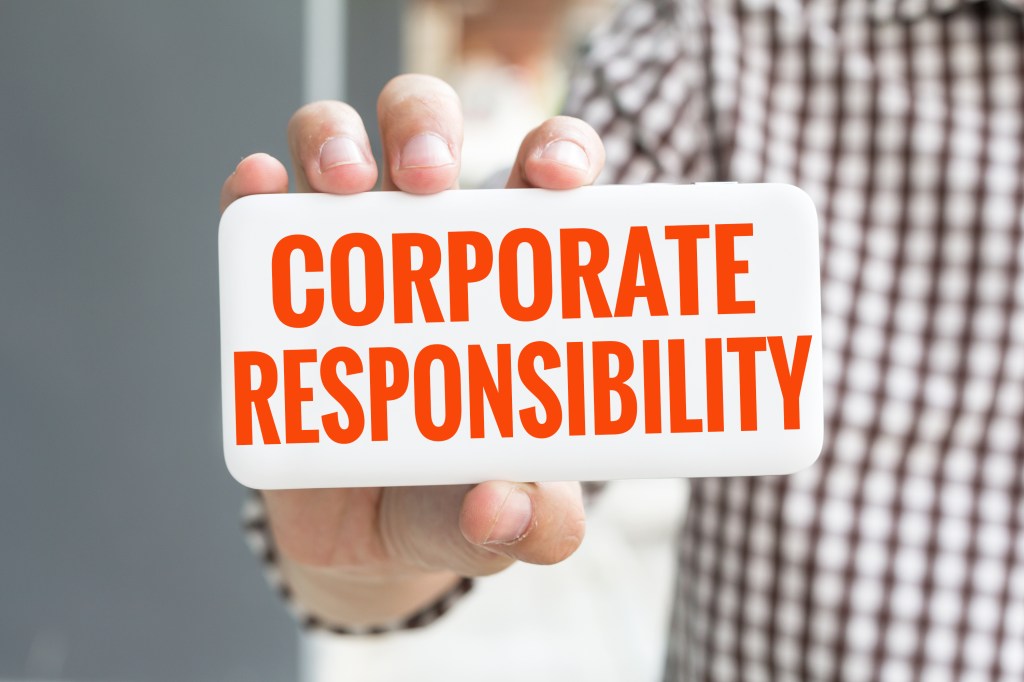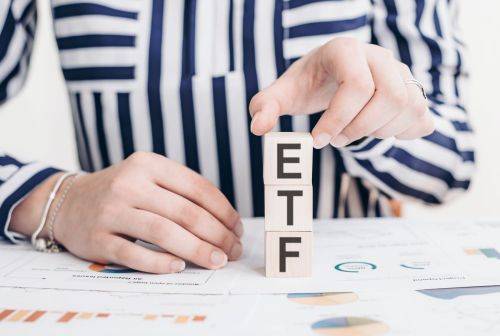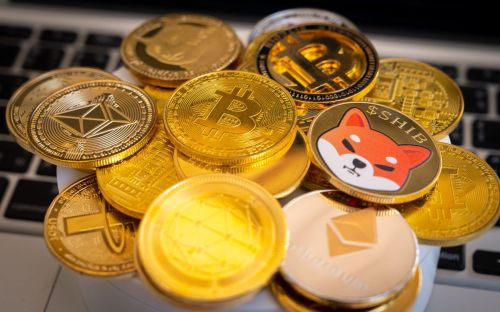Socially Responsible Investing (SRI): A Guide for Parents and Teens

There are many options for investors these days—and we’re not even talking about crypto or non-fungible tokens (NFTs). What used to be considered sure investments, like oil and gas or retail, now seem less attractive in a world where issues like climate change and labour equity are at the forefront.
That’s why socially responsible investing (or SRI) has taken off, especially among investment-conscious millennials and even Gen Z. Instead of looking at just monetary gains, investors are looking to invest in their values, too. And now it’s never been easier to do so. Here’s an overview of what SRI is, how it works, and how your teen may want to pursue SRI to generate social change and a return on their investment.
Key takeaways
- SRI is a way to invest your money where your values lie and still achieve financial gains.
- ESG, or environmental, social, and governance criteria, is an apples-to-apples way for socially conscious investors to compare different companies.
- Impact investing funds alternatives to harmful industries, such as funding for solar power to lessen the demand for fossil fuels.
- Teens are in a great position to choose SRI—not only do they have time on their side to grow their money, but they can also feel good about being agents of change for a better tomorrow.
What is socially responsible investing?
Socially responsible investing is a category of investing in which people prioritize their values alongside profits by choosing where they want their money to go and avoiding places where they don’t want their money to go—e.g., industries or activities that may be harmful to the planet and/or other people.
Also termed “sustainable investing” or “ethical investing,” the history of SRI goes back a long way. While the concept of ethical investing is likely much older, it’s believed that in the 1750s the Quakers actively avoided companies whose profits came from war and slavery.
What makes an investment socially responsible?
A socially responsible investment is one that is deemed not to be harmful to people and/or the planet. That’s it! There are no hard-and-fast rules when it comes to describing SRI investments. Maybe your family is opposed to investing in a cannabis company because you consider it a harmful substance. But you might find a different agricultural product that provides good jobs for the local community and supports sustainable practices.
In the example above, you are using two different approaches to decide whether this company is SRI: negative screening and positive screening.
Read more: Basic investing terms and definitions for kids and teens
What is negative screening?
Negative screening is deliberately excluding certain industries from your investments based on negative social impact, e.g., addictive substances or activities, fossil fuels, firearms, or other harmful products. Negative screening can also include companies with poor human rights records that are known for exploitative practices, or have ties with oppressive governments.
Because negative screening limits some earning opportunities, most people who invest this way can be seen as putting their values above their expected returns.

What is positive screening?
Positive screening is choosing to invest in companies based on their positive impacts, be it their sustainability practices, fair labour practices, or corporate responsibility. Investors can evaluate companies on their progress by looking through data supplied by the company and available to the public. Financial databases, like Sustainalytics or MSCI, usually assign a rating to each company based on their environmental impact, social impact, and corporate governance: Together, they form what’s known as environmental, social, and governance (ESG) criteria.
What is the difference between ESG investing and SRI?
Companies that engage in SRI are also considered to be engaging in ESG, but the latter is a different category of values-based investing. ESG investors consider the wider picture of a company’s performance compared with its industry peers.
ESG impact assesses companies based on three factors:
Environmental
This criterion assesses companies based on their climate impacts. Depending on the industry, a company might be graded on their:
- Greenhouse gas emissions
- Water and land use
- Deforestation
- Waste management
If you need a gentle way to talk about climate change with your kids, these tips and resources can help.

Social
Social impact refers to the company’s relationships with its customers, employees, and local community. That includes:
- How they manage privacy and customer data
- Gender and diversity within the company and its leadership
- Human rights
- Fair working conditions and pay for workers
Governance
Corporate governance refers to the structural stuff that ensures these companies are operating responsibly from the top down, like:
- The diversity of the board of advisors/directors
- How much the executives are paid
- Auditing standards
- Corporations’ relationships with their government, from lobbying to political contributions
ESG data helps investors decide where they want to invest, while simultaneously holding companies to account. But it also flips the narrative on what makes a healthy, successful company: Rather than viewing environmental responsibility and safe working conditions as simply altruistic, ESG creates a framework for sustainable growth. For example, when a company has a high ESG score, they’re also taking measures to reduce risks that stem from poor staff management and environmental impact.
SRI versus impact investing
Impact investing means supporting companies that create a positive impact. Instead of just saying no to fossil fuels, like SRI does, impact investors say yes to ventures such as wind and solar farms, local affordable housing projects, and waste-water purification organizations.
However, one thing SRI, ESG, and impact investors have in common is that all of these types of investors still—well—invest. They put in money for a project or a business with the expectation of making a decent financial return on that investment.
In other words, impact investors are not donors or loaners of money—they expect to make more than they put in, just like any other investor.
Does SRI make good financial sense?
Compared to a broader investment portfolio, SRI funds can either outperform or underperform compared to their non-SRI peers. Like any other investment, the successes of SRI funds rely on market trends, and the market moves as it chooses to.
On one hand, some responsible investors avoid industries like fossil fuels or military and defence, even though they historically perform well. While these investors may potentially miss out on upswings in profit, such as a boom in oil demand, they may sidestep the risk of oil collapse (i.e., financial loss), too.
But you can be a responsible investor and still have a diversified portfolio. Health care, tech, and agriculture are all exciting and SRI-friendly industries.
One last thing to note for investors is that SRI funds and ESG funds require data-gathering and are generally sold by smaller firms, so they tend to come with slightly higher management fees, which will eat into your profits. Do SRI funds make financial sense? The answer is yes—as much sense as any regular investment fund does.

Are SRI funds popular?
In a word: yes. While people have been investing according to their values for centuries, it’s finally hit the mainstream, thanks to Gen Z and millennials. More than half of younger investors are factoring ESG data into their investment decisions and they’re much more likely to see spending as a way to exercise their values.
In fact, countries like Canada, the United States, and the EU are seriously debating whether all companies should report their ESG data publicly. There are many reasons for this shift: the racial justice uprisings over the last few years, wealth inequality, and our rapidly declining natural resources.
At least one financial innovation can also take some credit for the surge in sustainable investing: the ETF, or exchange-traded fund.
An ETF or exchange-traded funds is a single pool of stocks (tiny slices of companies) and bonds (tiny loans you make to the government or other organizations) that an individual can buy and trade on the stock market. More than 500 SRI ETFs and mutual funds exist—three times as many as there were just five years ago. Because of ETFs, finding and investing in the issues you care about has never been easier.
How can teens benefit from investing in an SRI fund?
There are plenty of ways that teens and young adults can benefit from investing, especially in an SRI. Here are just handful:
- Teens can get a unique view of current events by following financial markets: Dramatic stock movements are usually linked to some event in the real world, like a war, a social uprising, or even a celebrity tweeting about an investment opportunity.
- Teens can rally around important social causes and exercise their individuality and personal agency by investing in companies they care about.
- Parents can help teens learn about social responsibility and sustainability issues by researching different funds and stocks.
- Best of all, teens can learn about financial literacy and investing. Plus, by starting young, they can dabble in investing when the stakes are lower, while living with their parents.
How to invest in SRI funds
For most investment products, teens need to be the age of majority to open an investment account. However, they may be able to have a parent open an investing account with them. If your teen is ready to start investing in SRI funds, here’s how to get them started.
Choose what to invest in
Depending on your teen’s budding investing style, and how hands-off or hands-on they want to be, your kid might consider investing in stocks, ETFs, mutual funds, or with a robo-advisor. They might even decide to help out a local social enterprise by investing in community bonds. It’s a really exciting time to be a values-based investor!
But before they start, it might be a good idea to find out how they feel about risk tolerance.
Discuss what issues to focus on
Remember how we said that SRI funds aren’t about just one thing? There are so many different issues worth caring about and investing in. Whether it’s clean energy, fair labour conditions, the circular economy, plant-based foods, or Black-owned businesses, teens are bound to find an ETF or mutual fund to suit their ideals.
Track your investment’s performance
Once you’ve helped your teen set up an account, and they’ve chosen investments and funded them, it’s time to ride the wave! Stock charts are updated in real time, so they can get the latest on how their ETFs and stocks are doing through a broker or a robo-advisor, or through stock market tracking sites like Yahoo! Finance.
Learn more about investing by visiting Investing 101: A guide for parents and teens.
The bottom line
In the wilderness of investing, SRI funds are actually no big deal. You can find them everywhere you pick up regular stocks and ETFs, and they’ve got just as much to offer as historically successful investments. Not only that, but sustainable and ethical investments are getting easier to find, as more consumers and governments press corporations for more transparency.
So, if you’re truly invested in the vision you want for the world, why not invest in some assets that jibe with your values?
Mydoh can help with a safe and secure environment, where kids can practise making their own money, saving for something special, and sticking to a budget.
Download Mydoh and help build the foundation of financial literacy for your kids and teenagers.
This article offers general information only and is not intended as legal, financial or other professional advice. A professional advisor should be consulted regarding your specific situation. While the information presented is believed to be factual and current, its accuracy is not guaranteed and it should not be regarded as a complete analysis of the subjects discussed. All expressions of opinion reflect the judgment of the author(s) as of the date of publication and are subject to change. No endorsement of any third parties or their advice, opinions, information, products or services is expressly given or implied by Royal Bank of Canada or its affiliates.














